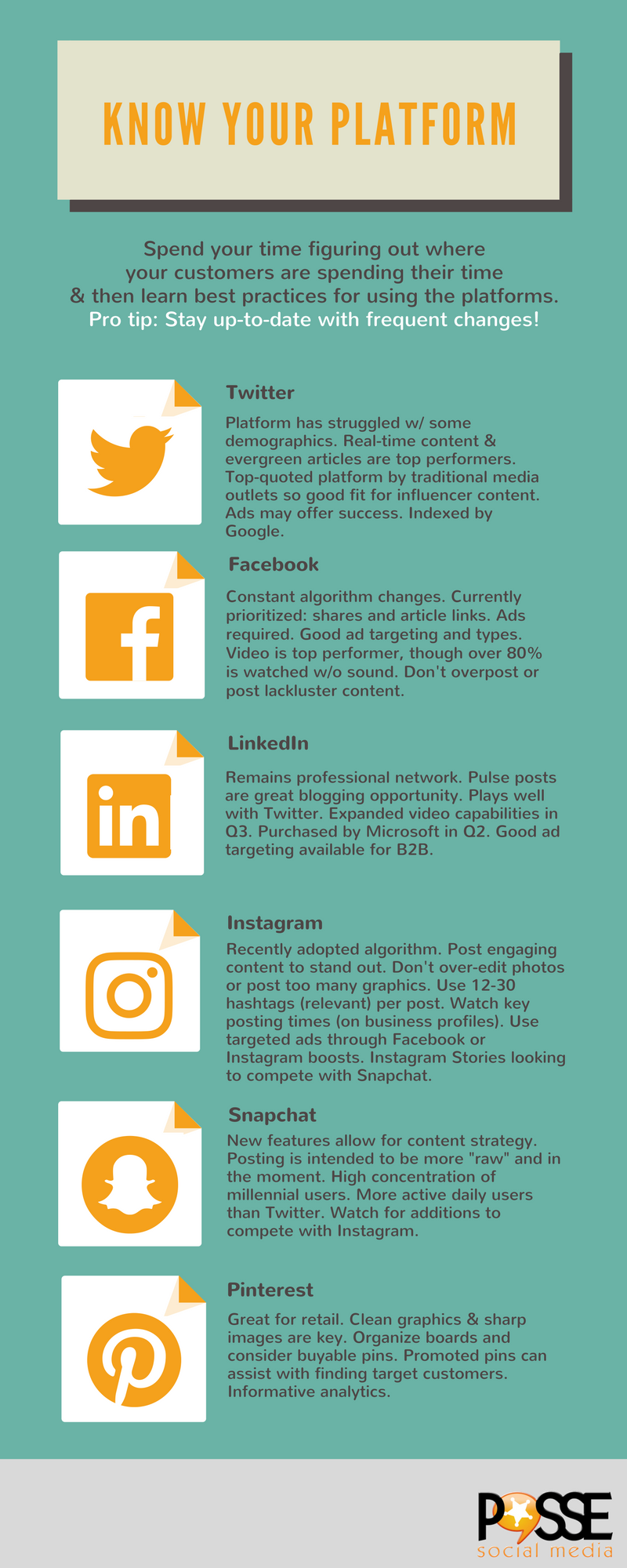Digital marketing is constantly changing. Business owners have great opportunities to find (and be found by) target customers. However, taking full advantage of what an online presence has to offer requires spending time and effort to learn best practices of each digital outlet. Even after mastering a platform, however, entrepreneurs and marketers must still take the time to stay updated on changes occurring weekly (and sometimes daily). It takes patience, research, and a little creativity. 
Before you start creating content, you must first create an overall digital media plan. This will include what, when, where, and how to post for each platform. Not knowing the best practices of digital media can make all your efforts useless. The best content will not help your business if it’s sent to the wrong platform or shared at the wrong time or fails to meet standard best practices. So let’s go through the basics of what you know when you’re framing your digital strategy.

 Not knowing what to post online will have a negative effect on your whole online marketing plan. This is the foundation for everything you will do online. Every business should have a guide for how they want to be viewed online. The strategy that you plan will have a direct correlation to how many, and what kind, of leads you will land. Do you want to be fun, edgy, serious or strictly informative? Even more importantly than what you want, make sure you know what your
Not knowing what to post online will have a negative effect on your whole online marketing plan. This is the foundation for everything you will do online. Every business should have a guide for how they want to be viewed online. The strategy that you plan will have a direct correlation to how many, and what kind, of leads you will land. Do you want to be fun, edgy, serious or strictly informative? Even more importantly than what you want, make sure you know what your  Not every platform is for every business or organization. The ones you select should have different types of content focus, chosen based on the unique audience and engagement you will get from that platform. You need to find out which platforms your audience uses. Take a look at your
Not every platform is for every business or organization. The ones you select should have different types of content focus, chosen based on the unique audience and engagement you will get from that platform. You need to find out which platforms your audience uses. Take a look at your 
 Like stated above, your posting times should be centered around your audience. When are they online? Before you schedule or write your content, check insights on the various sites and understand that your optimal times may be drastically different (or not) than the standard best times. Once you find days and hours you should post content, be sure you revisit the strategy on a weekly basis. Thanks to the ever-changing algorithms on many of the platforms, you can’t just “set and forget” these posts. These are a lot of factors to consider, and you might not have the time to do the appropriate research, but here’s a
Like stated above, your posting times should be centered around your audience. When are they online? Before you schedule or write your content, check insights on the various sites and understand that your optimal times may be drastically different (or not) than the standard best times. Once you find days and hours you should post content, be sure you revisit the strategy on a weekly basis. Thanks to the ever-changing algorithms on many of the platforms, you can’t just “set and forget” these posts. These are a lot of factors to consider, and you might not have the time to do the appropriate research, but here’s a